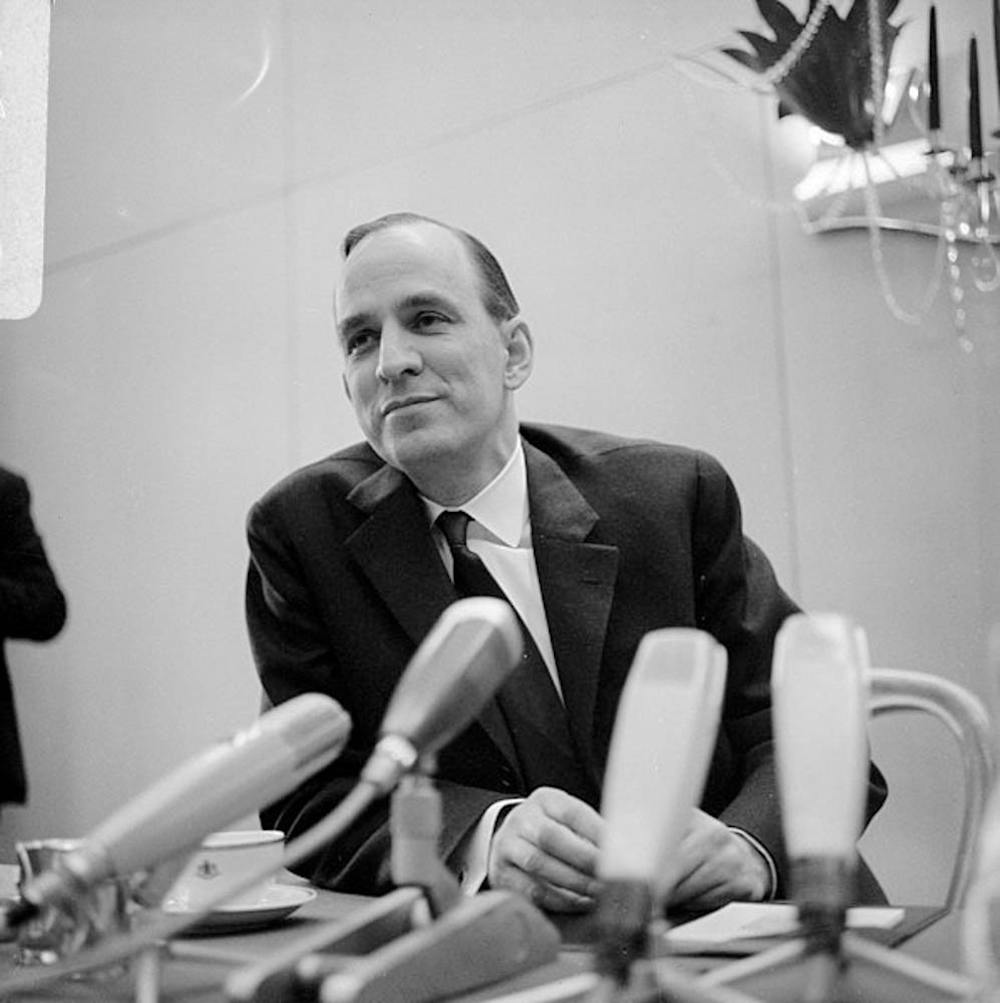Students gathered in the Granoff Center for the Creative Arts’ Martinos Auditorium Tuesday for the first U.S. showing of “Bergman — A Year in a Life.” Directed by Jane Magnusson ’92, this documentary focuses on world-famous Swedish film and theater director Ingmar Bergman in 1957, the year he rose to international stardom.
According to Marc Redfield, professor of comparative literature and chair of the department, the event was held to showcase a “remarkable film” created by Brown alums while also paying homage to Professor of Comparative Literature Arnold Weinstein, who has been teaching at the University since 1968. The film was directed by Magnusson, with the help of Henrik von Sydow ’82 — both of whom were students of Weinstein as undergraduates. Magnusson hails from Sweden, but it wasn’t until taking Weinstein’s “Nordic Legacy” class on Scandinavian literature that she learned about Bergman’s influence. According to Redfield, Weinstein was present at the documentary’s premiere in Stockholm, along with the Prime Minister of Sweden and other Swedish dignitaries. When Weinstein asked Magnusson and von Sydow to come to Brown for a screening, they “knew they couldn’t miss it,” Magnusson said.
This year marks the centennial of Bergman’s birth in 1918, so cinemas around the world have stayed busy screening retrospectives and reflecting on his equally cryptic life and work. In 1957 alone, Bergman released the films “The Seventh Seal” and “Wild Strawberries,” as well as directing a made-for-TV movie and several plays. Rumors of Bergman’s neurotic, dictatorial directing style contributed to his cult of personality. Many of his films are assumed to be autobiographical, but “A Year in a Life” features a never-before-seen interview with his brother Dag Bergman suggesting the way Bergman’s films depicted their shared childhood often strayed from the truth.
Magnusson’s documentary uses footage from Bergman’s films, as well as interviews from a number of Bergman scholars and his colleagues, to paint a nuanced, empathetic portrait of the director that Variety film critic Owen Gleiberman called “one of the most honest and overflowing portraits of a film artist that I can remember seeing.” Among the many interviewed were American singer, actress and filmmaker Barbra Streisand, 1960s talk-show host Dick Cavett and Weinstein himself.
Weinstein said when introducing the film that Magnusson’s choice to focus on 1957 was “brilliant.” He added, “unlike the kind of Scandinavian gloom that most of you probably anticipate if you’ve seen Bergman, you will laugh at many moments in this film. That is much due to the wit of Magnusson.”
Asked why she took on the project, Magnusson said, “When I graduated in 1992 and went back to Sweden, Bergman was just this really grumpy old man who could make anything he wanted with Sweden’s cultural funding. I wanted to figure out who this grumpy old man once was in order to get at the root of the power he had in Sweden.”
Magnusson is also the visionary behind films like “Cupcake” and “Christina Lindberg: The Original Eyepatch Wearing Butt Kicking Movie Babe.” She is currently working on a new documentary about Madeline Stuart, “the only professional model with Down Syndrome,” Magnusson said.
Magnusson’s success is a testament to how “a Brown education can change your life in wonderful ways,” Redfield said. “Learning about literature or film can have unanticipated, wonderful consequences later in life.”





